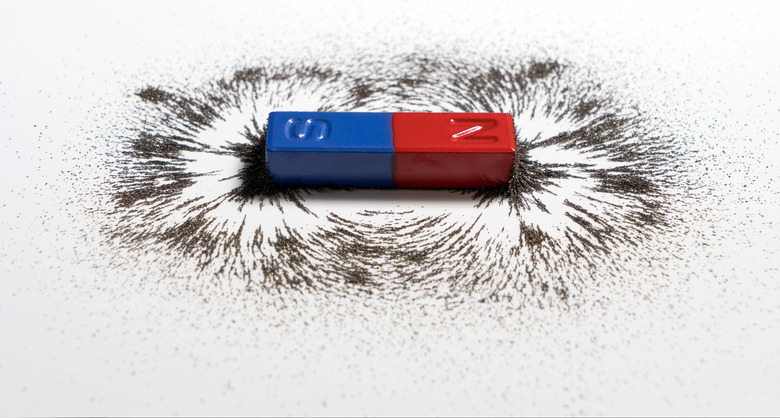How To Make Super Strong Permanent Magnets
All the possible ways to make a permanent magnet are listed in Joseph Henry's student notebook, which is kept at Princeton University. Henry, the 18th century American physicist, is known – together with Michael Faraday – as the father of electrical technology, so it's no surprise that one of the methods he describes uses electricity. It turns out that if you have the right type of metal rod and enough electrical power, electromagnetic induction can turn the rod into a strong permanent magnet. How strong? Definitely stronger than a fridge magnet.
What Is Magnetism?
What Is Magnetism?
Magnetism and electricity are not only related, they are two sides of the same coin, and it was the phenomenon of electromagnetic inductance, discovered independently by Henry and Faraday, that led to this realization. Electrons have spin, which gives each atom a small magnetic field. It's possible to induce the electrons inside certain metals to spin in the same direction, and that gives the metal magnetic properties. The list of metals that do this isn't long, but iron is one of them and, because steel is made from iron, it can also be magnetized.
Ways to Make a Magnet
Ways to Make a Magnet
Among the methods Henry mentions for turning an ordinary iron or steel rod into a magnet are:
- Rub the rod with a piece of metal that is already magnetized.
- Rub the rod with two magnets, drawing the north pole of one magnet from the center of the rod to one end while you draw the south pole of the other magnet in the opposite direction.
- Hang the bar vertically and hit it repeatedly with a hammer. The magnetizing effect is stronger if you heat the rod.
- Induce a magnetic field with an electric current.
The end result of each method is to induce the electrons in the rod to spin in the same direction. Since electricity is made of electrons, it's a good assumption that the last method is the most efficient.
Making Your Own Magnet
Making Your Own Magnet
You need a rod made of steel, iron or some other material that can be magnetized. (Hint: There aren't many other choices.) A 10d or larger steel nail is perfect. If you aren't sure it's steel, use a small magnet to test it. You also need a foot or two of insulated copper wire and a power source, such as a D-cell battery or a low-voltage transformer that you can plug into an outlet. If you opt for a transformer, be sure it has terminals to which you can connect wires.
To magnetize the nail, wrap the wire around it, forming as many coils as you can. It's fine to overlap the wire on top of coils you've already wound. The strength of the inductive field – and your magnet – increases as you increase the number of coils, so be generous. Leave the ends of the wires free, and strip off an inch of insulation so you can connect them to the power source.
Hook up the wires to the power source and turn on the power. Leave the power on for a minute or so and then turn it off. Test the nail by holding it over some iron filings. It should now be magnetized and attract the filings, even when the power is off.
Increasing the Strength
Increasing the Strength
You can increase the strength of the magnet by increasing the number of coils. For example, if you double the number of coils, you double the strength of the inductive field. However, when you increase the wire length to do this, you increase the electrical resistance, which lowers the amount of current flowing through the wire. Since current, which is the movement of electrons, creates the field, the inductive power goes down. Offset this current loss by increasing the voltage, either by changing the setting on the transformer or by using a larger battery.
Warning
Be sure to keep the voltage within safe limits. You don't want to electrocute yourself, nor do you want to create a magnet that sticks permanently to the refrigerator.
Cite This Article
MLA
Deziel, Chris. "How To Make Super Strong Permanent Magnets" sciencing.com, https://www.sciencing.com/make-super-strong-permanent-magnets-6520830/. 9 March 2018.
APA
Deziel, Chris. (2018, March 9). How To Make Super Strong Permanent Magnets. sciencing.com. Retrieved from https://www.sciencing.com/make-super-strong-permanent-magnets-6520830/
Chicago
Deziel, Chris. How To Make Super Strong Permanent Magnets last modified March 24, 2022. https://www.sciencing.com/make-super-strong-permanent-magnets-6520830/
